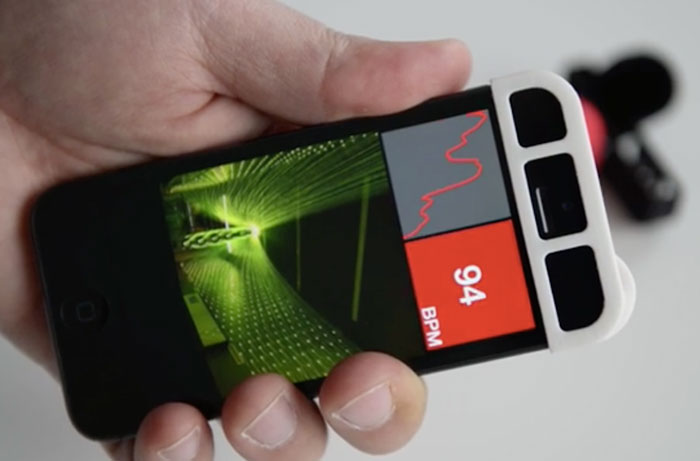With 3D printing more widely available than ever, Morpholio, a studio that specializes in developing iOS Apps to change the way people interact and create designs, has found a way to use its potential in their biometric intelligences research. They did it by creating an iPhone “photoplethysmographer”, that allowed them to collect biological data to gain a better understanding of the way the body reacts to media interaction.
Founded in 2011, the Morpholio Project has made a name for itself (with coverage in many top tech magazines and websites) because of the way its iOS Apps are able to exploit all existing means of communication and data gathering, from device sensors to cloud computing and social networking, to develop new creative means for designers.
A photoplethysmogram is an optically obtained “plethysmogram”, or, in more accessible language, it is a volumetric measurement of an organ. Morpholio has 3D printed a device made to fit the iPhone 5 that holds one’s index finger right in front of both the camera and the light. This way Morpholio’s R&D App is able to gather real time information on blood flow and heart rate, by shining the light through the finger and taking shots of the blood moving.
“For us R&D comes from some of the technology transfers, and that can happen from design as well as from any other field, such as medical,” says Mark Collins, Morpholio’s Co-creator. “Through photoplethysmography we wanted to understand how your heart beat changes in relation to the images you are seeing.”
The device 3D printerd by Morpholio indicates how to locate the finger for optimal positioning in front of the camera and flash, while blocking external light from entering the camera and thus ensuring an optimal reading. It is essentially a miniaturized blood pressure machine. Morpholio’s goal is to fully take advantage of the device network that already surrounds us to redefine what current technology can do for us.
“The Smartphone we carry around with us holds an array of sensors [that include] location, orientation, sight and sound”, says Toru Hasegawa, also one of Morpholio’s Co-creators. “There is a huge potential for understanding more of ourselves by tapping into these signals.”
The following video provides further insight:
Morpholio R&D from The Morpholio Project on Vimeo.




